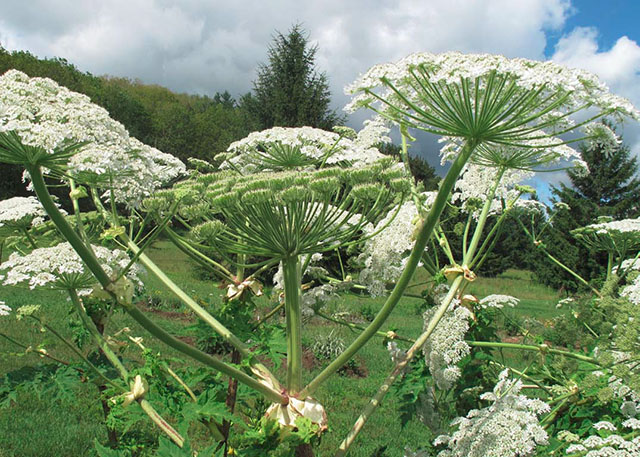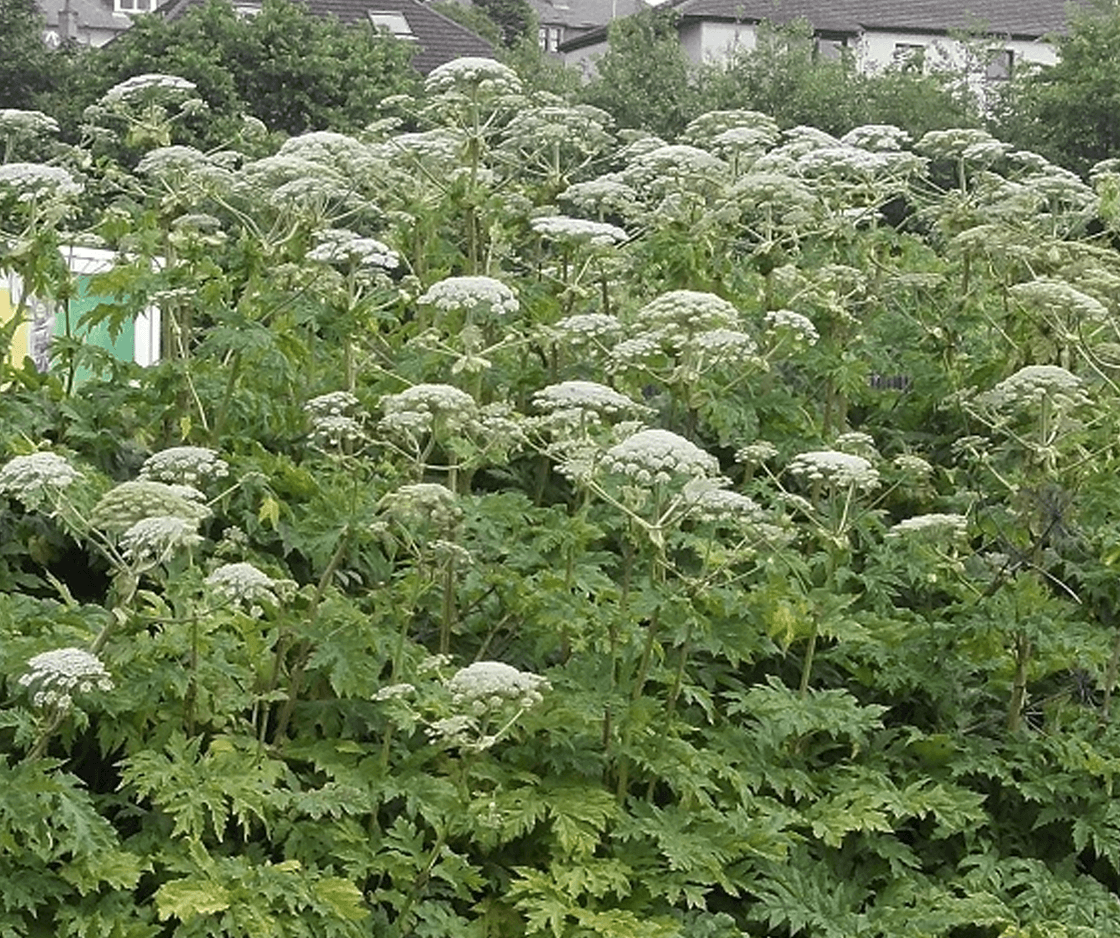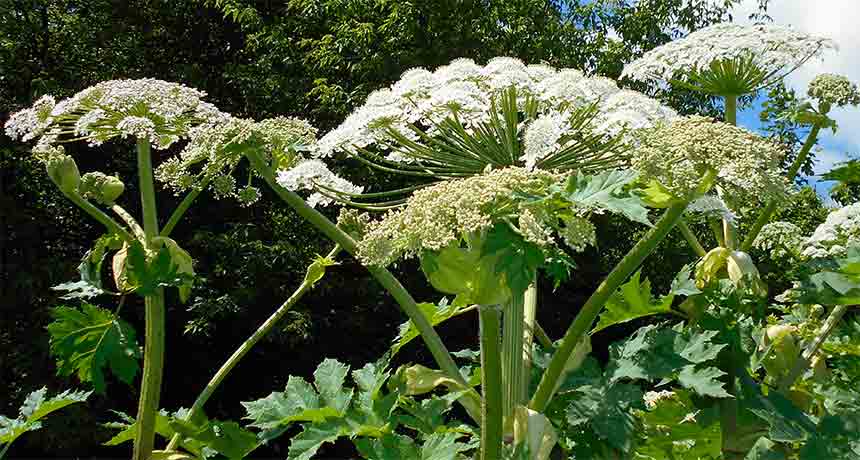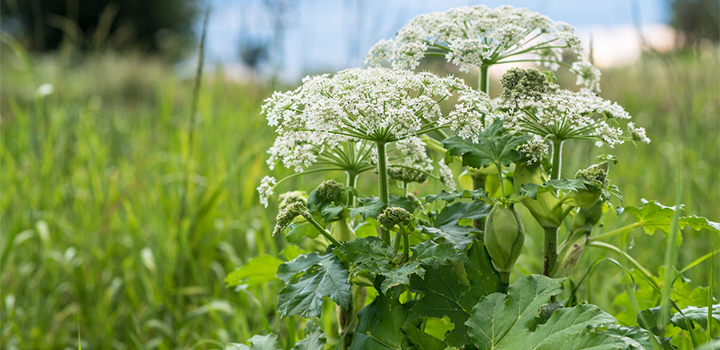Hogweed: The
Title: Hogweed: The Dangerous Invasive Plant
Introduction:
Hogweed is a large, invasive plant that can be found in many parts of the world. It is known for its toxic sap, which can cause severe burns and blistering if it comes into contact with the skin. Hogweed can also cause blindness if the sap gets into the eyes.
In this blog post, we will discuss the dangers of hogweed, how to identify it, and what to do if you come into contact with it. We will also provide some tips on how to prevent the spread of hogweed.
Main Content:
- What is hogweed?
Hogweed is a tall, herbaceous plant that can grow up to 14 feet tall. It has large, lobed leaves and white flowers that bloom in the summer. Hogweed is native to the Caucasus Mountains in Eurasia, but it has been introduced to many other parts of the world, including North America, Europe, and New Zealand.
- How to identify hogweed
Hogweed can be easily identified by its large size, white flowers, and purple-spotted stems. The leaves of hogweed are also distinctive, with deeply lobed edges and a smooth, glossy surface.
- The dangers of hogweed
The sap of hogweed contains a chemical called furanocoumarins, which is toxic to humans. If the sap comes into contact with the skin, it can cause severe burns and blistering. The sap can also cause blindness if it gets into the eyes.
- What to do if you come into contact with hogweed
If you come into contact with hogweed, it is important to act quickly. Wash the affected area with soap and water as soon as possible. If the sap gets into your eyes, flush them with water for at least 15 minutes.
You should also seek medical attention if you come into contact with hogweed. A doctor can assess the severity of your burns and provide treatment.
- How to prevent the spread of hogweed
The best way to prevent the spread of hogweed is to remove it from your property. If you see hogweed growing in your yard, you can dig it up and dispose of it properly. You should also be careful not to spread the seeds of hogweed, as they can easily germinate in new areas.
Conclusion:
Hogweed is a dangerous invasive plant that can cause serious injuries. It is important to be able to identify hogweed and to take precautions to avoid coming into contact with it. If you do come into contact with hogweed, it is important to act quickly and seek medical attention.
Visit Home Gardening for more information about hogweed.
FAQ of hog weed
- What is hogweed?
Hogweed is a tall, invasive plant that can cause serious skin burns. It is native to the Caucasus Mountains, but it has been introduced to many other parts of the world, including North America, Europe, and Asia.
- What are the symptoms of hogweed exposure?
If you come into contact with hogweed sap, you may develop skin burns that can appear anywhere from 12 hours to 4 days after exposure. The burns can be severe and can take months to heal. In some cases, they can even lead to scarring.
- How can I prevent hogweed exposure?
The best way to prevent hogweed exposure is to avoid contact with the plant altogether. If you must be near hogweed, wear long sleeves, pants, gloves, and a hat. You should also avoid touching the plant or its sap.
- How can I control hogweed?
There are a number of ways to control hogweed, including:
* Manual removal: This is the most effective way to control hogweed, but it can be labor-intensive.
* Mechanical removal: This involves using a mower or weed whacker to cut down the plant. However, this method is not as effective as manual removal, as the plant can resprout from the roots.
* Herbicide treatment: There are a number of herbicides that can be used to kill hogweed. However, it is important to use herbicides that are specifically designed for hogweed, as other herbicides may not be effective.
- What should I do if I think I have been exposed to hogweed sap?
If you think you have been exposed to hogweed sap, wash the affected area with soap and water as soon as possible. You should also avoid sunlight for the next 48 hours. If you develop any skin burns, see a doctor immediately.
Image of hog weed
10 different images of hog weed that are free to use:
- A close-up of a hog weed flower. The flower is white with purple stamens.

- A field of hog weed in bloom. The plants are tall and green, with white flowers.

- A single hog weed leaf. The leaf is large and green, with jagged edges.

- A group of hog weed plants. The plants are growing in a shady spot.

- A hog weed plant with its roots. The roots are thick and white.

- A hog weed plant in winter. The plant is dormant, but its leaves are still visible.

- A hog weed plant in the sun. The plant is covered in bristly hairs.

- A hog weed plant in the rain. The plant's leaves are glistening wet.

- A hog weed plant in a garden. The plant is surrounded by other plants.

- A hog weed plant in a forest. The plant is growing in the shade of the trees.

Post a Comment for "Hogweed: The"